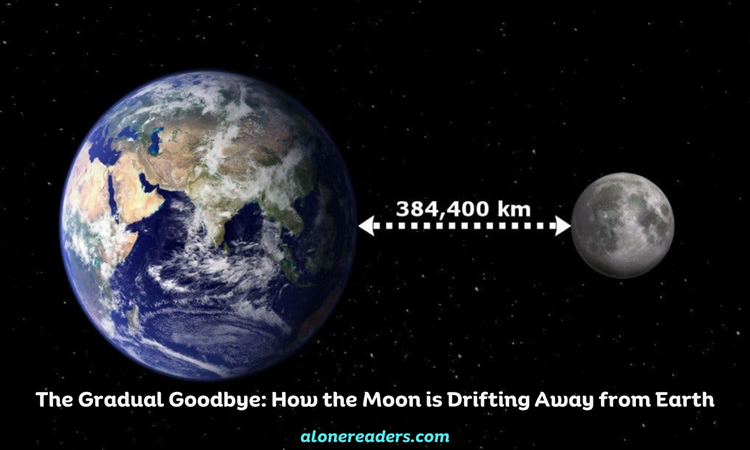
The bond between Earth and its Moon is one of the cosmos's most captivating dances. This celestial pairing, governed by the laws of physics, has been the subject of awe and inspiration for eons. However, beneath the constancy of the Moon's presence in our night sky, a gradual shift is occurring — the Moon is slowly drifting away from Earth. This subtle motion, measured at just over an inch a year, may seem inconsequential at first glance, but it holds profound implications for our understanding of the Earth-Moon system and the long-term dynamics of our planet.
The phenomenon of the Moon's gradual distancing from Earth can be attributed to tidal forces. These are the same forces that cause the oceans to rise and fall, creating tides. As the Moon orbits Earth, its gravitational pull creates a bulge in the planet's oceans. Since Earth is rotating faster than the Moon orbits it, this bulge is always slightly ahead of the Moon. Consequently, the gravitational pull between the Earth's tidal bulge and the Moon acts as a tug on the Moon, giving it a little extra push in its orbit.
This transfer of energy has a fascinating consequence: while the Moon gains energy and moves to a higher orbit, Earth loses rotational energy, thus slowing down very gradually. This is akin to a figure skater extending their arms during a spin to slow down. Over millions of years, the cumulative effect of this process is the increase in the Moon's distance from Earth.
The precise measurement of the Moon's departure was not possible until the Apollo missions of the late 1960s and early 1970s. Astronauts placed retroreflectors on the lunar surface, which allow scientists to bounce laser beams off them and back to Earth. By timing how long it takes for the laser light to return, the distance to the Moon can be measured with astonishing precision. These measurements have confirmed that the Moon is receding at a rate of about 3.8 centimeters (1.5 inches) per year.
The Moon's retreat from Earth is not a recent phenomenon. Billions of years ago, the Moon was much closer to Earth than it is today. As a result, it appeared larger in the sky, and its gravitational pull was even stronger, creating colossal tides. The energy dissipation from these tides is what has been driving the Moon's outward spiral.
The fossil record on Earth bears witness to this ancient dynamic. Sedimentary rocks dating back hundreds of millions of years show evidence of tidal rhythms that do not match our current lunar month, suggesting a time when the Moon orbited much closer to our planet.
What does the future hold for the Earth-Moon system as the Moon continues to drift away? In the short term, the effects are minimal. However, over geological time scales, the consequences become more significant. As the Earth's rotation slows, our days will gradually lengthen. This will have a subtle effect on the Earth's climate and the behavior of the atmosphere.
Moreover, the increasing distance of the Moon may eventually affect the stability of Earth's axial tilt. The Moon's gravitational influence currently helps to stabilize our planet's tilt, which is important for maintaining the relatively mild and stable climate that has allowed life to thrive. If the Moon drifts too far, this stabilizing effect will weaken, potentially leading to more extreme climate variations.
The Moon's slow departure from Earth is a remarkable reminder of the dynamic and ever-changing nature of the universe. It challenges us to look beyond the apparent stillness of the night sky and appreciate the intricate and ceaseless celestial dance in which we are all participants. While the thought of the Moon drifting away may evoke a sense of melancholy, it also underscores the importance of studying and understanding our place in the cosmos. The Moon’s gradual goodbye, then, is not a cause for alarm but an invitation to marvel at the complexity and grandeur of the cosmic forces that shape our world.